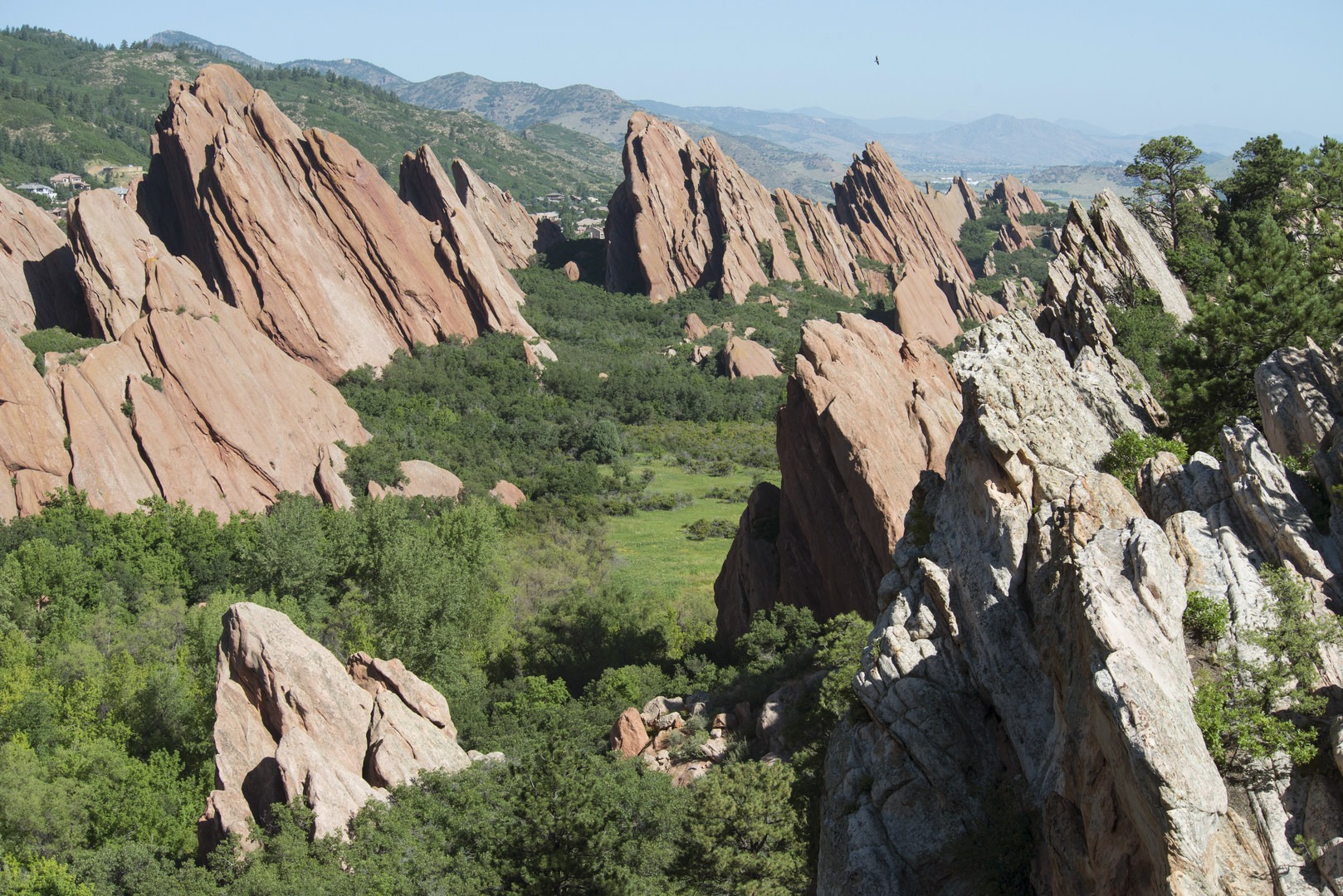Dramatic red-orange sandstone hogbacks, spires, and monoliths slice through the foothills of the Rocky Mountains at Roxborough State Park. The perspective beneath these behemoths feels definitively prehistoric, and taking an afternoon to enjoy this 3,500-acre Colorado Natural Area promises to deliver show-stopping views year round.
Starting your day at the visitor center can provide useful information that enhances those awe-struck moments that characterize the hiking and sightseeing around Roxborough. There’s also a bookstore and a restroom inside. A variety of walking, geology, and wildlife tours are conducted out of the visitor center for those looking for a more in-depth look at the flora, the fauna, and the history of the park. There are a handful of programs that are designed just for kids. Keep tabs on the Colorado Department of Parks and Wildlife website for up-to-date information.
From the visitor center, the Fountain Valley Overlook is a mere half-mile hike along an ADA-accessible gravel path. From here visitors can get a sweeping view of several different formations in the park like the Dakota Hogback and the Lyons formation. Continuing 3.2 miles to the terminus of the trails within the park delivers hikers to the top of the impressive Carpenter Peak at a towering altitude of 7,100 feet. This is the highest point of the park, so the 180-degree view is stunning and well worth the effort.
Roxborough State Park offers an incredible look into the particularities of the topography of this area when it was first exposed during the Precambrian to Late Mesozoic eras. From the top of Carpenter Peak, Precambrian gneiss and biotite-muscovite granite have been exposed by the relentless, eternal weathering of the Rocky Mountains, and geologists are still making discoveries about its long, complicated story.
Though most striking, the geology wasn’t the only contributing factor to its designation as a National Natural Landmark—the ecological variety is staggering thanks to the riparian and wetland communities, mixed grass prairieland, and pine woodlands in such a small total area. The variety of flora and fauna matches the ecological diversity, and deer, elk, prairie dog, and rabbit are among the most common mammals. The park is also home to over 150 species of birds, 11 species of reptiles, and elusive mammals like mountain lions, coyotes, and black bears.


























Comments
Sign In and share them.